Carddass
Carddass (sometimes misspelled Cardass) is a set of card vending machines created by Bandai, though the product name is often also applied to the collectible cards they dispense.
Awkwardly named, the name was inspired by AMeDAS (Automated Meteorological Data Acquisition System), the Japanese system used for gathering weather data. Bandai wanted to imitate this idea: that their card vending machines could be a font of (franchise-specific, card-printed) information for children. The first machine was released in 1988, with intent to sell and distribute trading cards, though it has since evolved to include digital cards that could be used with arcade and mobile apps in March 2005.
Carddass is notable for releasing the very first Pokémon card set, Pocket Monsters Carddass Trading Cards, beating out the Pokémon Trading Card Game's base set by a month!

Pocket Monsters Carddass Trading Cards were originally advertised in the October edition of CoroCoro Comics magazine (released September 15, 1996), broken into 4 parts. The first 2 are collected under Carddass 100 Pocket Monster Part 1 (released September 20-30, 1996) and Carddass 100 Pocket Monster Part 2 (released early October 1996). Both comprised of red and green versions of all 151 Pokémon, as well as several additional cards, dispensed in sets of 5 for 100円 or 1 for 20円.
The fronts are emblazoned with "MONSTERS COLLECTION," cut-off English text, and watercolor art by Ken Sugimori, while the back provide information, stats, and the liklihood of finding the Pokémon in the Red and Green video games. Interestingly, the background English text matches up with the text presented in the Pocket Monsters Pokedex, published in April 1996 and never brought to the US (for a more detailed translation of the book itself, please see LavaCutContent's page). It broadly describes Pokémon and their environments, and reads (reconstructed to the best of my ability, honoring existing spelling and grammatical errors):
Approximately 150 kinds were discovered among us. Most of them were discovered at the grassland. Plenty of food is to be found in the, which makes grassland comfortable place for them to live in. Majority of them are harmless to human beings and have moderate character. POCKET MONSTERS living in the mountains have been evolving in a special way. This is due to the crucial environment in which they have been living. They occassionally appear in a grassland and cities. POCKET MONSTERS living by the water side are strong against water but weak to fire. Small POCKET MONSTERS lives in the forest. Plentiful food is to be found in the place which makes forest a comfortable place for the small animals to live in. POCKET MONSTERS that have been living in the sea are very primitive compared to others. They had no need to evolve due to stable and confortable environment in whichl they have been living in for many centuries. As for the flying POCKET MONSTERS, their eyesight have developed extremely. It is because they had to find baits from high attitudes. They are also experts in raising up children by catching baits from the forest and grasslands. POCKET MONSTERS living in urban settings are affected to the problems of pollutions and waste but, no one can blame them. Their existence is just like a [text ends here]
A promotional jumbo Pikachu card was given out at the 1997 Tokyo Toy Expo on March 19-23, 1997, and Part 3 and Part 4 would be released in April and June 1997, respectively. Both sets feature new watercolor art by Ken Sugimori that would never be used on any other product, showcasing a feature move for each 151 Pokémon (e.g. for Ditto, it shows a Ditto mid-transform). Considering how often other Sugimori Ditto art is used over and over, this is quite the novelty! The backs present similar information as in the Parts 1 and 2 cards, with appearance stats for Red, Green, and Blue.
The Part 3 and 4 cards are probably my favorite due to the exclusive art and the fact that Ditto features on many other Pokémons' card art, usually suffering the consequences of that Pokémon's attack!
With the immense success of Parts 1-4, Bandai would go on to make additional Carddass sets, for both the video game and anime. Some of these would include pop-out menko! A very incomplete listing for Carddass:
| Carddass 100 Pocket Monster Part 1 | September 1996 | ||
|
|
|||
| Carddass 100 Pocket Monster Part 2 | October 1996 |

|

|
|
|
|||
| Jumbo Carddass Pokémon Chip Shooter | 1996 |

|
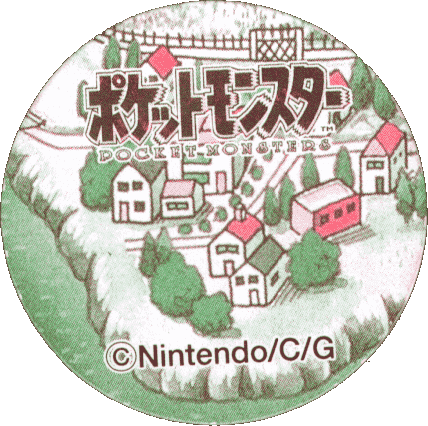
|
|
|
|||
| Jumbo Carddass W Pokémon | 1996 |
|
|
|
|
|||
| Carddass 100 Pocket Monster Part 3 | April 1997 |
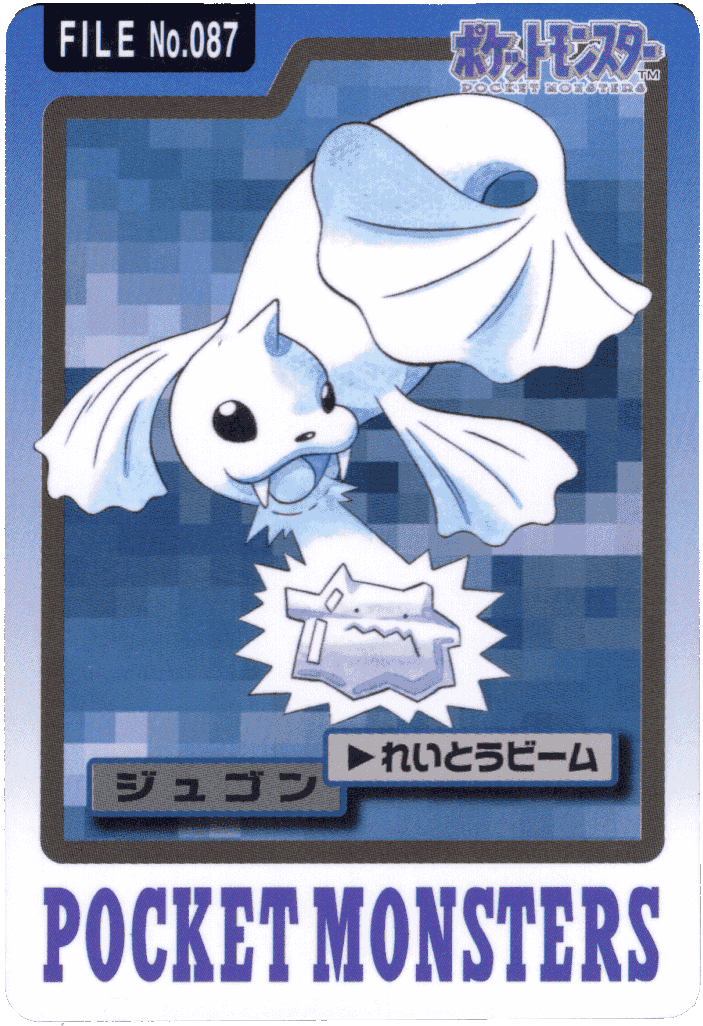
|

|
|
|
|||
| Carddass 100 Pocket Monster Part 4 | June 1997 |
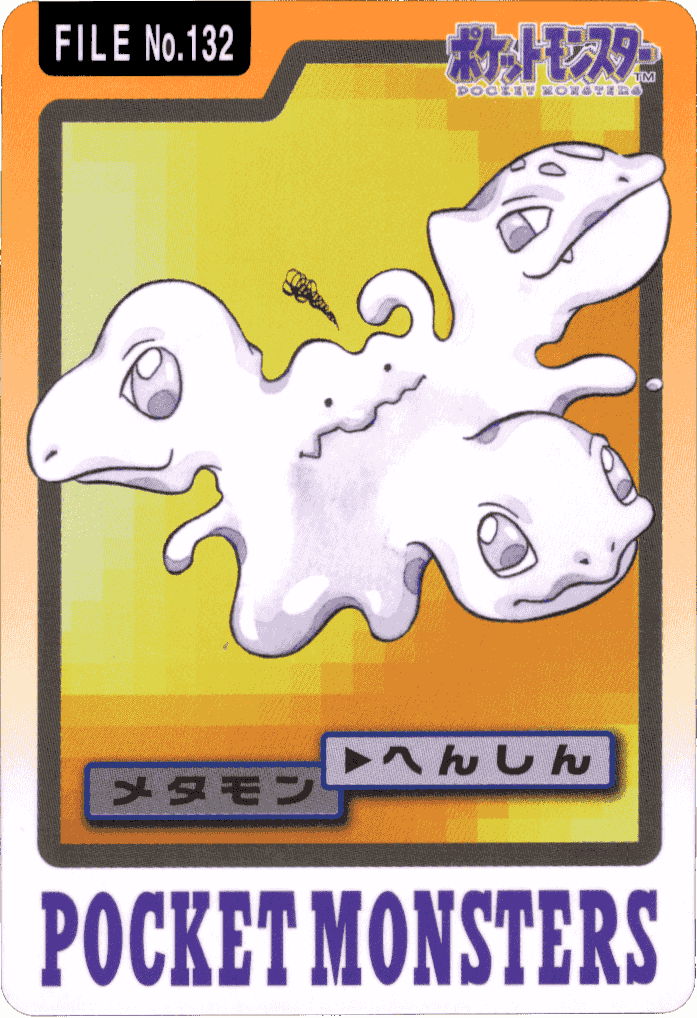
|

|
|
|
|||
| Jumbo Carddass Pokémon Chip Shooter 2 Half-Chip | 1997 |

|

|
|
|
|||
| Jumbo Carddass W Pokémon Part 2 | 1997 |
|
|
|
|
|||
| Bandai Slide-Up Battle Cards Part 1 | 1997 |

|
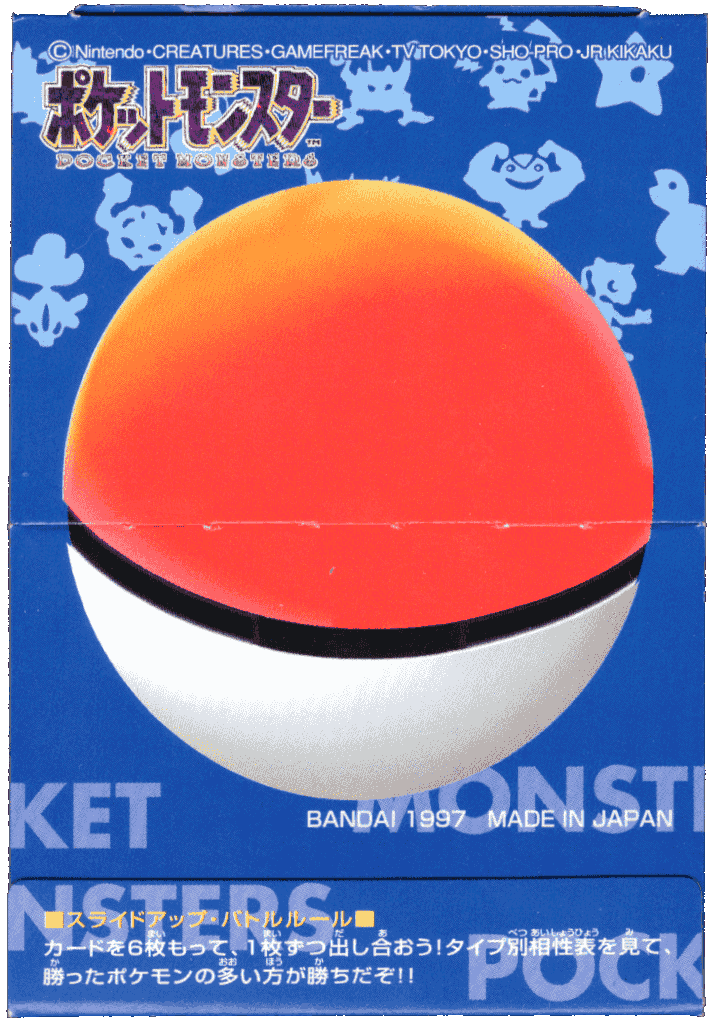
|
|
|
|||
| Jumbo Carddass Pokémon Animation Version Part 1 & 2 | 1997 |
|
|
|
|
|||
| Jumbo Carddass W Pokémon Part 3 | 1998 |
|
|
|
|
|||
| Bandai Slide-Up Battle Cards Part 2 | 1998 |

|

|
|
|
|||
| Jumbo Carddass Pokémon Animation Version Part 3 & 4 | 1998 |
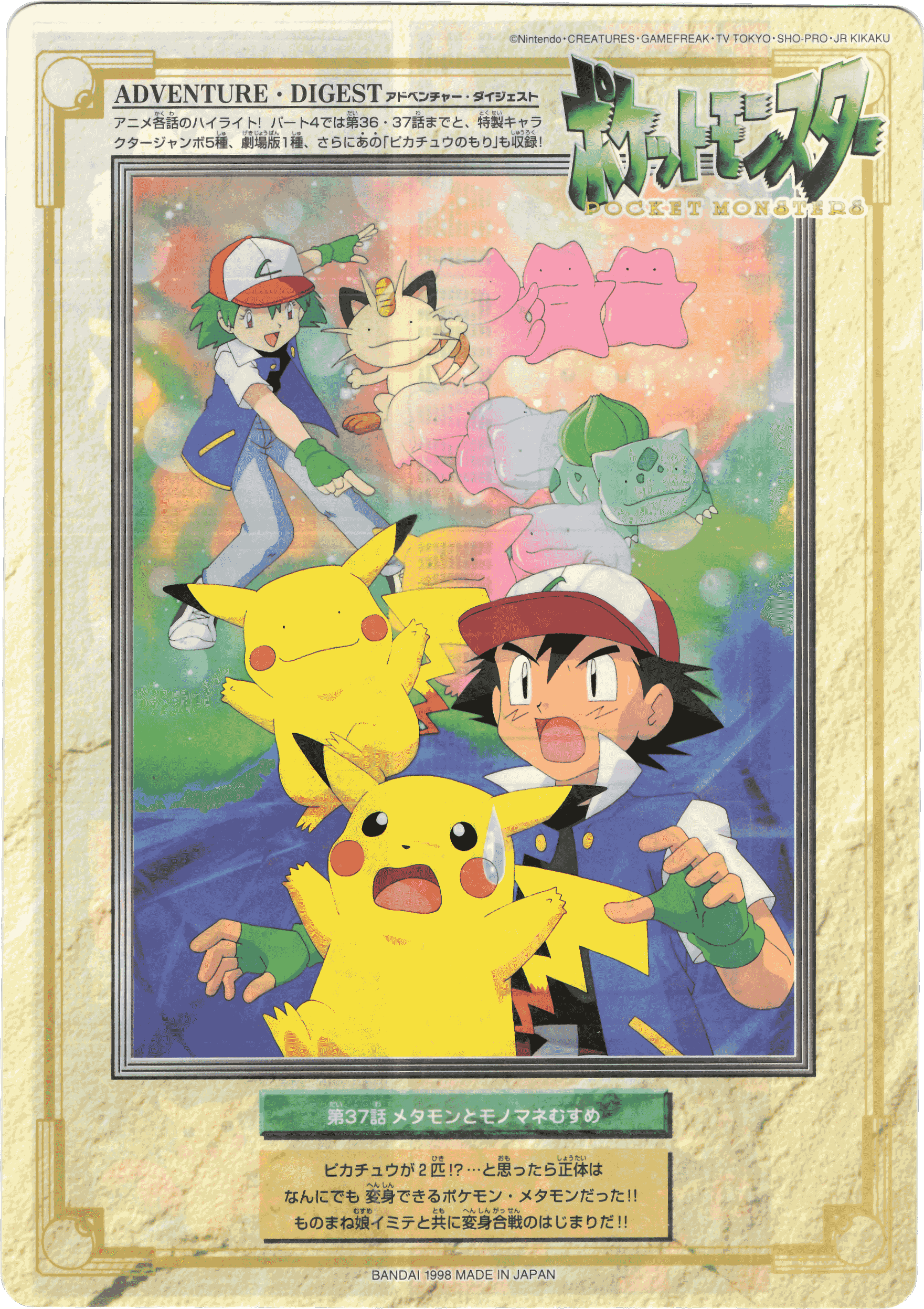
|
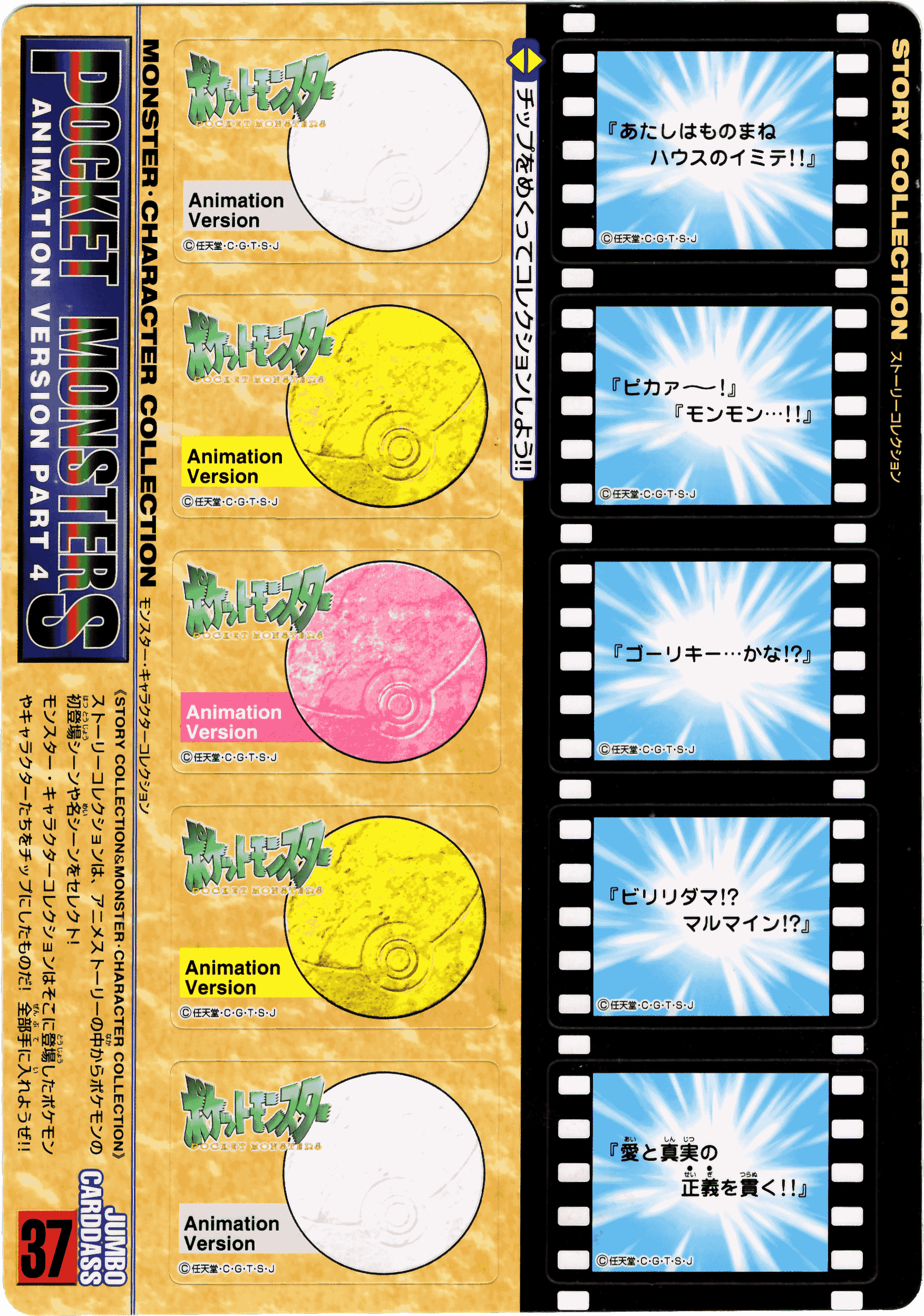
|
|
|
|||
| Bandai Slide-Up Battle Cards Part 3 | 1998 |

|

|
|
|
|||
| Carddass Pokémon Advanced Generation: Pokédex Card Part 1 & 2 | 2003 |

|

|
Sealdass
Following the financial success of the Carddass cards and the Pokémon Trading Card Game, Bandai put out a secondary set of vending machine items in late 1997 under a similar name (The Japanese word for "sticker" is "シール," often romanized as "seal"). This time, however, they were stickers on thin cardboard, with Pokémon-specific info such as basic stats, evolution information, and Red/Green moveset on the card back.
Like the Cardass sets, the initial price was 100円 for 5 stickers or 20円 for 1.
Subsequent sets would be released in 1998 and beyond, much more influenced by the anime. As far as I'm aware, there's no official documentation on names/dates for these Sealdass sets, though the price of them has recently started going up now that CGC Trading Cards has started officially grading them. Several Sealdass cards I passed on earlier are now way outside of my price point, which is sad... Alas!
In any case, a very incomplete listing for Sealdass:
| Bandai Sealdass Part 1 & 2 | 1997 |

|
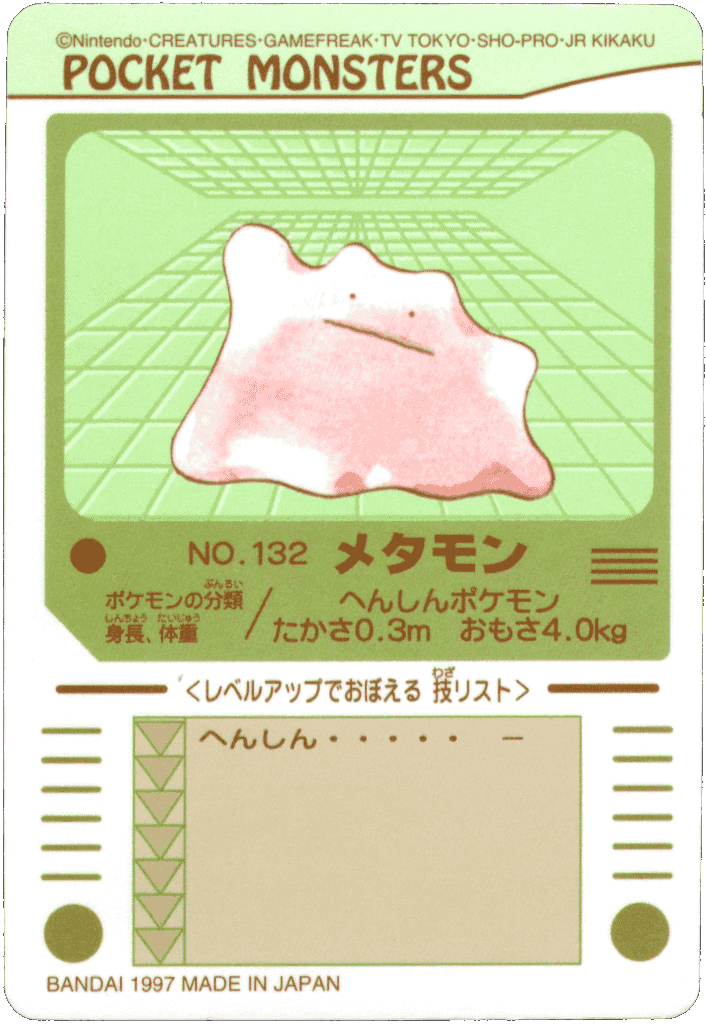
|
|
|
|||
| Bandai Sealdass Part 3 & 4 | 1998 |
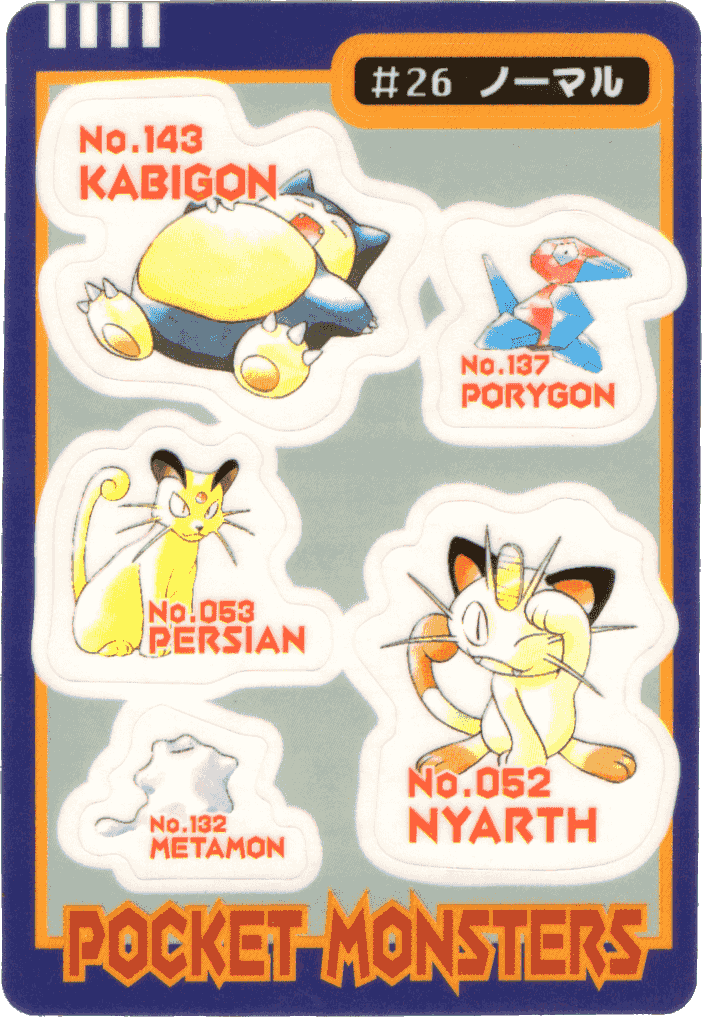
|
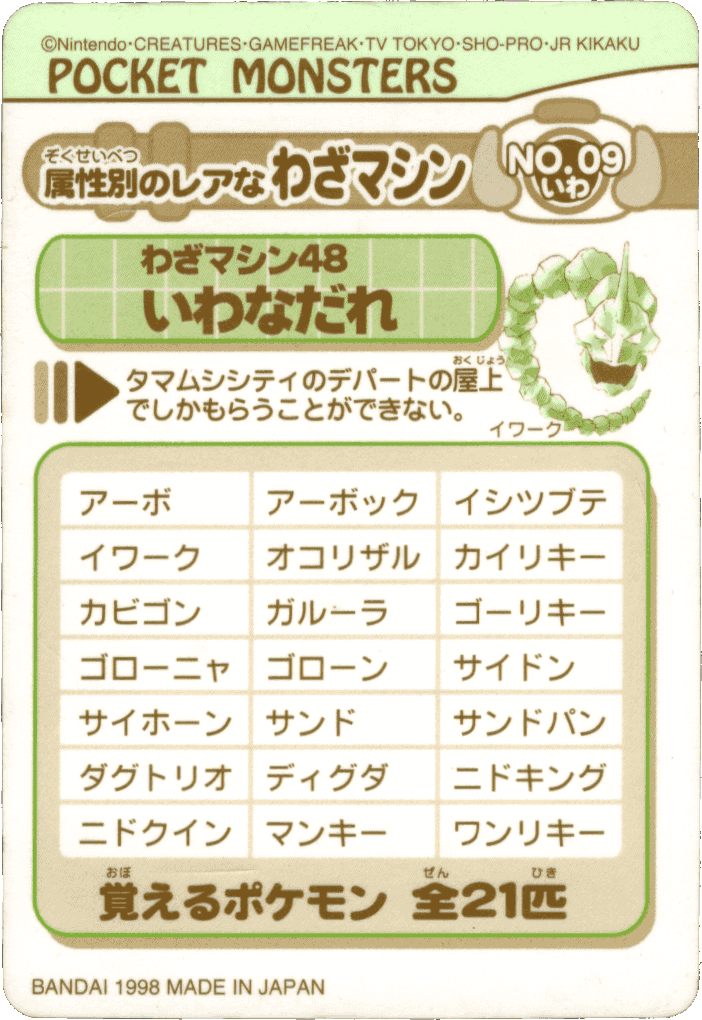
|
|
|
|||
| Pokémon Fancy Graffiti Part 1 | 1998 |
|
|
|
|
|||
| Pokémon Fancy Graffiti Part 2 | 1999 |

|

|
|
|
|||
| Pokémon Fancy Graffiti Part 3: Orange Islands | 1999 |
|
|
|
|
|||
| Pokémon Diamond & Pearl 1 | 2007 |

|

|
|
|
|||
| Pokémon Diamond & Pearl 2 | 2009 |
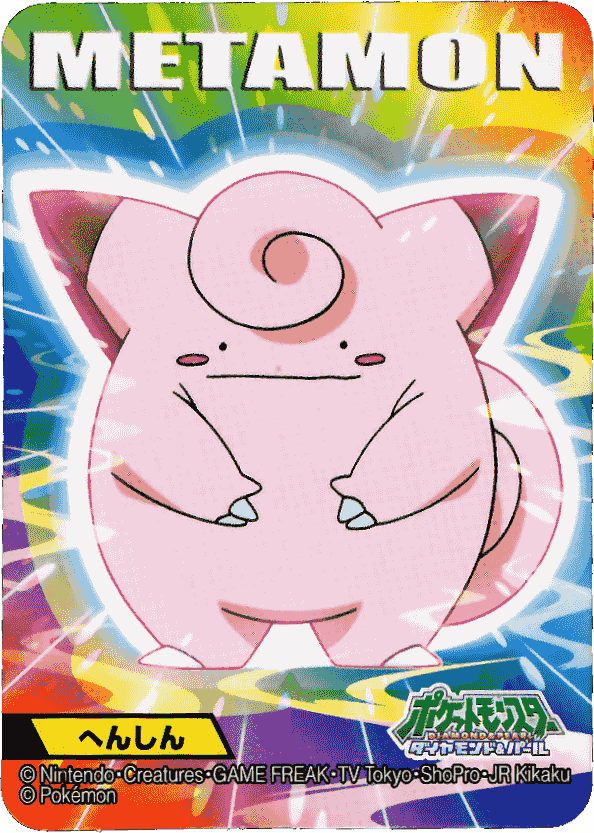
|
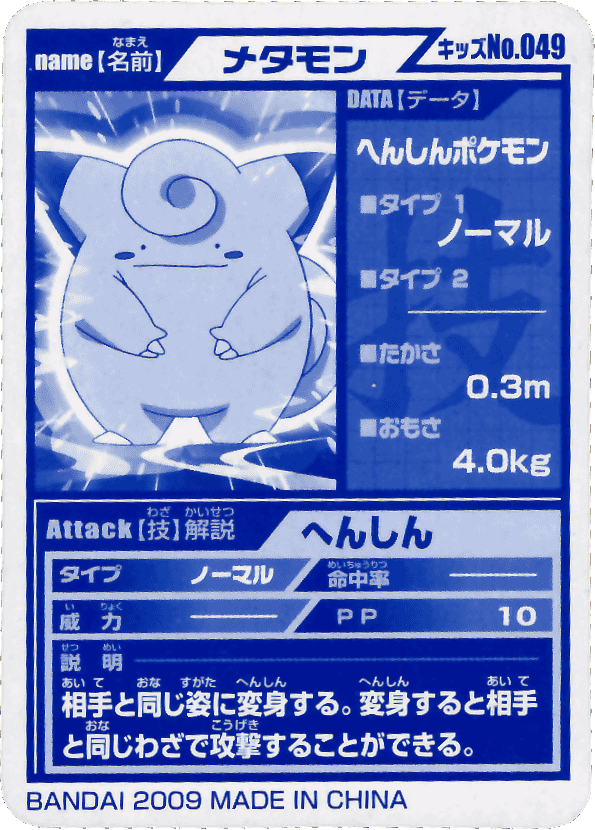
|